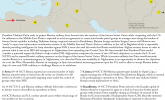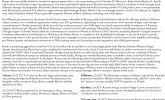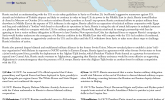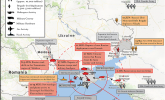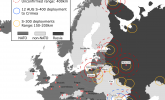February 27, 2022 - ISW PressThe Russian military has likely recognized that its initial expectations that limited Russian attacks would cause the collapse of Ukrainian resistance have failed and is recalibrating accordingly. The Russian military is moving additional combat resources toward Ukraine and establishing more reliable and effective logistics arrangements to support what is likely a larger, harder, and more protracted conflict than it had originally prepared for. The tide of the war could change rapidly in Russia’s favor if the Russian military has correctly identified its failings and addresses them promptly, given the overwhelming advantage in net combat power Moscow enjoys. Ukrainian morale and combat effectiveness remain extremely high, however, and Russian forces confront the challenge of likely intense urban warfare in the coming days.
Russian forces largely conducted an operational pause on February 26-27 but will likely resume offensive operations and begin using greater air and artillery support in the coming days. Russian airborne and special forces troops are engaged in urban warfare in northwestern Kyiv, but Russian mechanized forces are not yet in the capital. Russian forces conducted limited attacks on the direct approaches to Kyiv on both banks of the Dnipro River, but largely paused offensive operations in northeastern Ukraine. Russian forces likely paused to recalibrate their – to date largely unsuccessful – approach to offensive operations in northern Ukraine and deploy additional reinforcements and air assets to the front lines.
